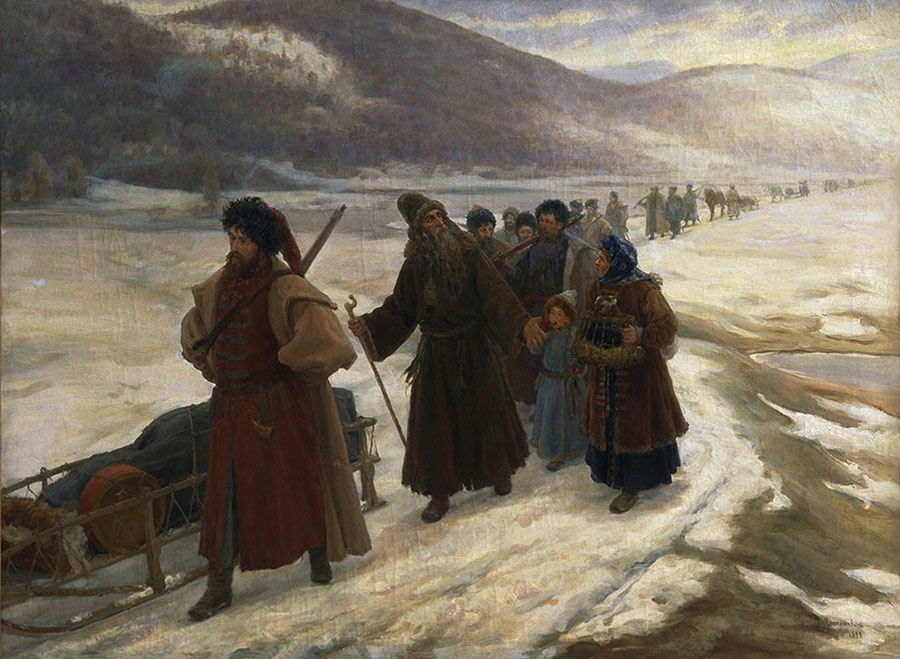The Savage Punishment of Siberian Exile
The wretched existence of those banished to Russia’s freezing expanses east of the Urals is vividly described in this excellent study.

When the Scottish explorer John Dundas Cochrane visited the town of Tobolsk in the early 1820s, he found ‘very good society … and the strongest features of content … in this hitherto supposed metropolis of barbarism and cruelty’. But few others walking through Siberia in the 19th century would have shared this view, since the majority of them were convicts shackled and poorly fed and more likely to agree with Dostoevsky that they were in ‘The House of the Dead’.
In this welcome book, Daniel Beer follows in the path of others but brings to the subject a new view as well as fresh material from archives in Tobolsk and Irkutsk, as well as Moscow and St Petersburg.
Most of the ‘housemates’ began their long journey in the old and new capital, where they were sentenced to exile for a range of offences varying from petty crime to high treason. They included the Decembrists, convicted for their botched attempt to seize power at the death of Alexander I in 1825. Several of them were noblemen who found comfortable enough quarters for themselves, their wives and families and went on to make a considerable contribution to the development of the culture of the huge region east of the Urals. Even today, some of the inhabitants consider themselves to be the heirs of the Decembrists. Other political exiles included the Poles who had participated in the rising against the Russian occupation in 1863. Then there was Dostoevsky himself, who was sentenced to be shot for participation in clandestine political activity but reprieved just before the firing squad pulled the trigger: an educational experience that contributed to the great writer’s understanding of crime and punishment.
A writer visiting Siberia voluntarily was Anton Chekhov, who went as far as the offshore island of Sakhalin, where he found the most squalid of conditions, among women and children in particular. One of his short stories tells how years of banishment have made an ageing ferryman ‘no longer alive, a stone, clay’. Indeed, the most powerful impression made by this book is of the hellish lives suffered by the rank and file during the tsarist period. Perhaps the worst fate of all was to be sent to the Nerchinsk mining region, where Cochrane found it ‘impossible to conceive the haggard, worndown, wretched and half-starved appearance’ of the workers and conditions were considered inhuman even by some of the authorities. Most of the exiles put up with their miserable lot, but some became irregulars in ‘General Cuckoo’s Army’, taking advantage of the spring thaw to attempt the long journey back home to European Russia, even though recapture could mean savage punishment. One such was Kalina Koronets, receiving 20, 40 and 60 lashes as well as increments to his sentence for three successive failed bids to escape, before he managed to pass himself off as a different penal labourer and so gain a reduced sentence.
Beer provides some evocative illustrations, one of the most striking of which is the painting by Ilya Repin of The Unexpected Return, catching the shocked reactions of a family to the surprise appearance of a gaunt relative. There are haunting photographs of convicts both branded and scarred, indicating that to be sent to ‘The House of the Dead’ was probably a worse fate than could be found in its counterparts elsewhere in Europe. Then, of course, after a brief period of liberation following the Revolution, even worse was to come with the introduction of the Gulag.
As the author says, the Russian word for Siberia is pronounced ‘Seebeer’. This reviewer is probably not the first to make the facetious point, but if you want to read the most remarkable recent study of Siberian exile under the tsars, ‘See Beer’.
The House of the Dead: Siberian Exile Under the Tsars
Daniel Beer
Allen Lane 512pp £30
Paul Dukes is the author of A History of the Urals (Bloomsbury, 2015).




